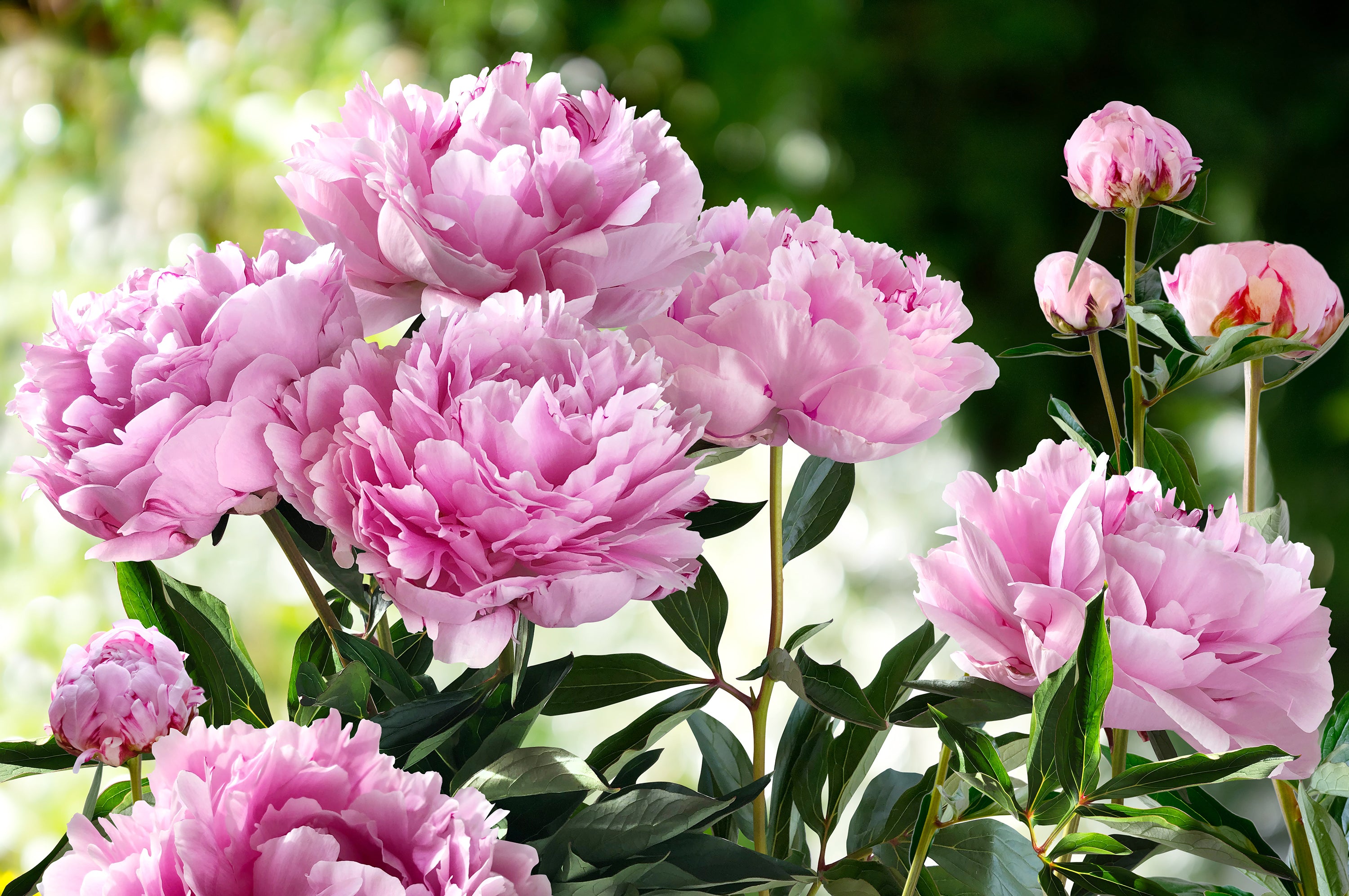
Peonies
Pre-orders closed for 2024
A perennial favorite in cut flower gardens, peonies will take your breath away with their large, extravagant blooms that return year after year.
While gardeners used to be limited to just three peony choices: white, crimson, and rose pink, today there are thousands of varieties available on the market! There are six peony flower types to choose from: anemone, single, Japanese, semi-double, double, and bomb. Fragrances vary as well—some plants, such as ‘Festiva Maxima’ and ‘Duchesse de Nemours’ have intoxicating rose-like scents, while others are lemony or have no scent at all.
Below you will find a selection of our 2024 varieties.
The Basics
Planting
While peonies are not exceptionally picky, be mindful of choosing your location. They do not like disturbance and do not transplant well.
Peonies like full sun, and though they can manage with half a day, they bloom best in a sunny spot that gets 6 to 8 hours of sunlight each day.
Provide shelter from strong winds, as peonies’ large blooms can make them top-heavy. Use stakes to hold them up, if necessary. Don’t plant too close to trees or shrubs, as peonies don’t like to compete for food, light, and moisture.
Grow peonies in deep, fertile, humus-rich, moist soil that drains well. Soil pH should be neutral.
When planting a container-grown peony, cover it no deeper than it grew in the pot and water thoroughly after placing in the ground.
General Care
Unlike most perennials, peonies don’t need to be dug and divided every few years.
Spare the fertilizer. Work the soil well before you plant, mixing in compost and a little fertilizer, and that should be enough.
If your soil is poor, apply fertilizer (bonemeal, compost, or well-rotted manure) is early summer, after the peonies have bloomed and you have deadheaded the flowers. Don’t fertilize more than every few years.
Help the stems. If peonies have any structural weakness, their stems are sometimes not strong enough to support their gigantic blossoms. Consider three-legged metal peony rings or wire tomato cages that allow the plant to grow through the center of the support.
Deadhead peony blossoms as soon as they begin to fade, cutting to a strong leaf so that the stem doesn’t stick out of the foliage.
Fall Care
After peonies leaves begin to fade, side-dress plants with a balanced, slow-release fertilizer; avoid fertilizing with high nitrogen.
After frost, the foliage will die back completely. Cut the plant to the ground in the fall to avoid overwintering diseases.
Don’t smother peonies with mulch. Where cold temperatures are severe, for the first winter after planting, mulch VERY loosely with pine needles or shredded bark. Remove mulch in the spring.
While peonies do not need to be divided like other plants, fall is a good time to divide or transplant if your plants are too large. Remove the leaves, then dig around the plant’s roots in a large circle, and lift. If dividing, ensure a new section has at least 3 to 5 eyes. Replant.
Extra Tips
Peonies make wonderful cut flowers, lasting more than a week in a vase. For best results, cut long stems in the morning when the buds are still fairly tight.
You can wrap freshly cut peony stems in a damp paper towel and put them in a plastic bag in the refrigerator until you’re ready to use them. When removing the peonies from the refrigerator, give the stems a fresh cut and place them in lukewarm water to wake them up.
Intersectional Peonies
Intersectional peonies are a relatively new class of Paeonia created by crossing herbaceous garden types with woody tree types. They are often called “Itoh Peonies” because the original cross was first made successfully by Japanese nurseryman Mr. Toichi Itoh in 1948.
Intersectional Peonies offer the best qualities of both garden and tree peonies combined including:
- Very large, tree peony-like flowers in colors not previously seen in herbaceous types
- Healthy, herbaceous foliage similar to tree peonies but with a robust, bushy habit that does not require staking
- Strong, herbaceous stems that hold the flowers upright even after a heavy rain; makes a better landscape plant than older herbaceous peonies
- A longer bloom time due to additional flowers being produced on side shoots
- Extreme winter hardiness like herbaceous types but with increased vigor
Varieties include Bartzella, Coral Charm, Henry Bockstoce, Pink Hawaiian Coral, Raspberry Sunday, and Wladyslawa.
2024 Peony List
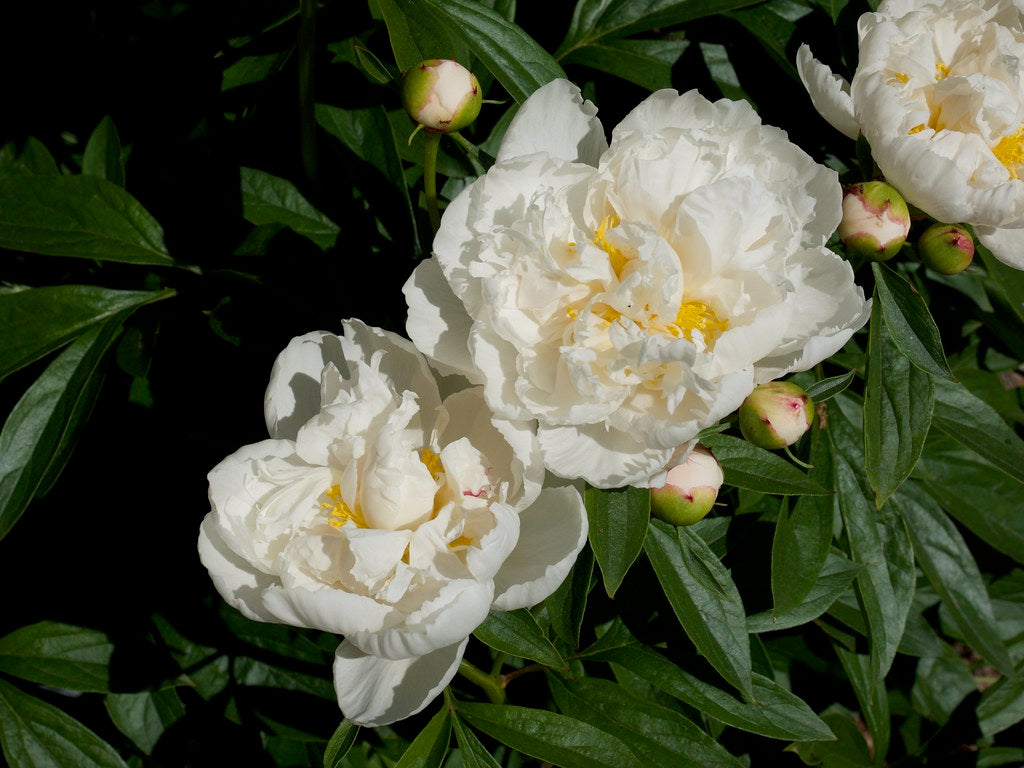
Paeonia lactiflora 'Allan Rogers'
Peony Type: Herbaceous Peony
Bloom Time: Mid-Season Peony
Flower Form: Double
Large fragrant flowers are packed with pure white petals. The compact plants remain upright even after days of rain, and are good for the front border. Named for Allan Rogers, peony nurseryman and author.
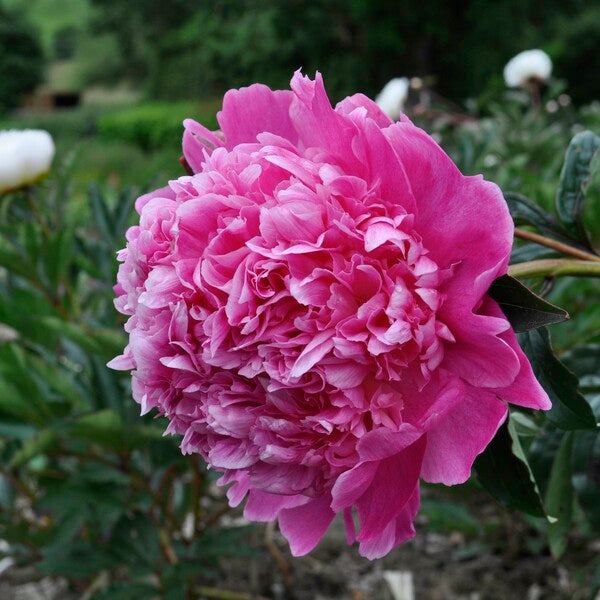
Paeonia lactiflora 'Barbara'
Peony Type: Herbaceous Peony
Bloom Time: Mid-Season Peony
Flower Form: Double
Double, deep pink flowers are a ball with fringed petals in the center surrounded by large guard petals. It has contrasting gray leaves and very strong stems making it an excellent choice for cutting gardens.
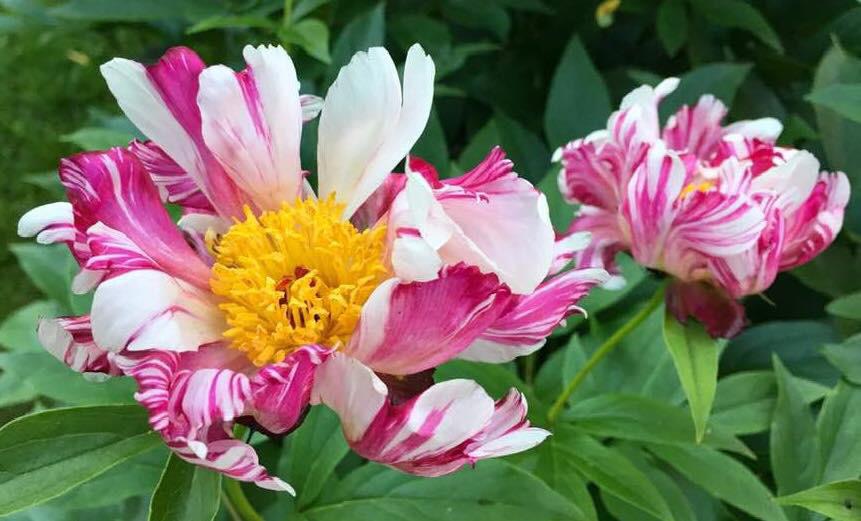
Paeonia lactiflora 'Circus Circus'
Peony Type: Herbaceous Peony
Bloom Time: Early Season Peony
Flower Form: Semi-Double
The semi-double blooms have twisting petals that are striped in raspberry red and white. The petals contrast nicely with the bright yellow centers. As the bloom continues to unfurl the very center of the eye is a bright red.
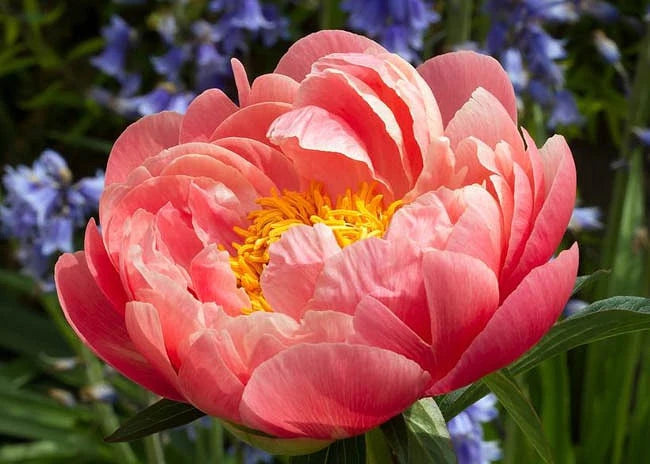
Paeonia lactiflora 'Coral Sunset'
Peony Type: Herbaceous Peony
Bloom Time: Early Season Peony
Flower Form: Semi-Double
Among the first peonies to bloom, Coral Sunset is exceptionally beautiful! The large, semi-double bowl-shaped blossoms, with elegantly ruffled petals, emerge intense coral with rose overtones before gradually fading to pale ivory. Modestly fragrant, they are borne in profusion on strong stems, which do not require staking. A real standout in the garden!
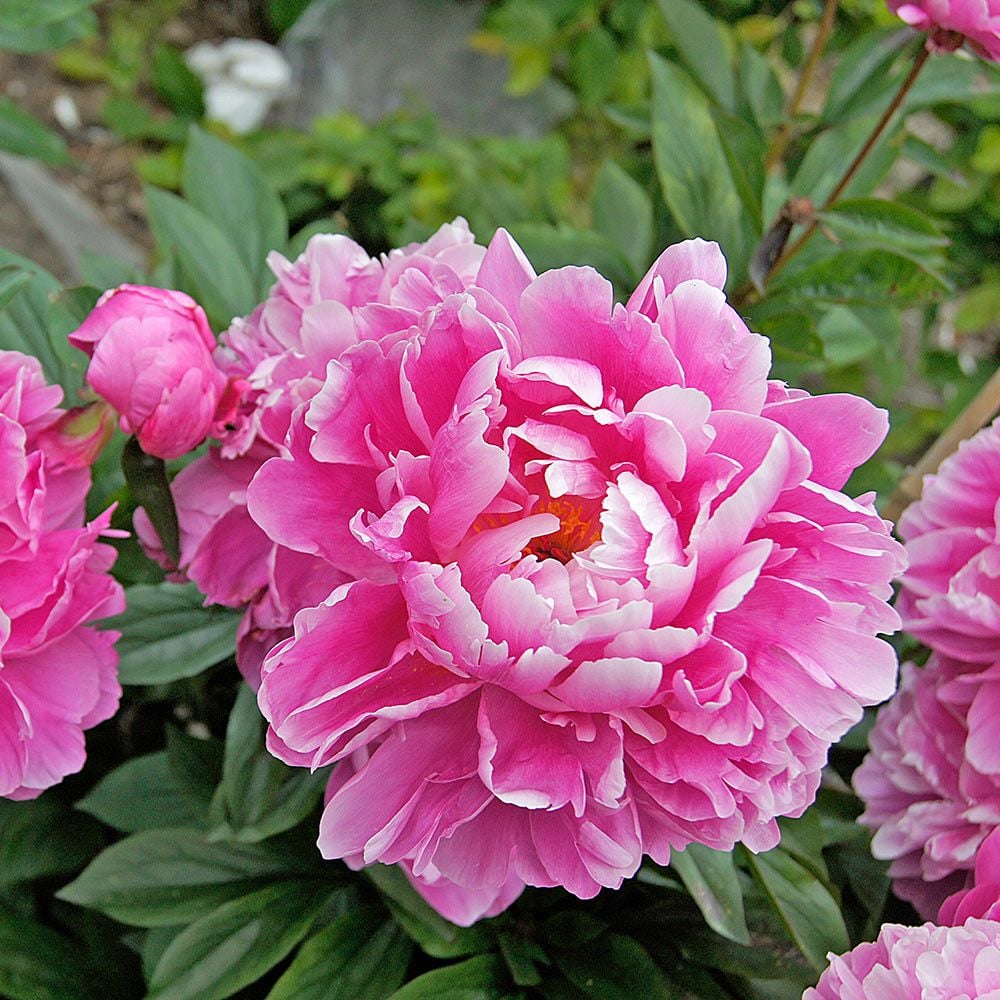
Paeonia lactiflora 'Dr. Alexander Fleming'
Peony Type: Herbaceous Peony
Bloom Time: Mid-Season Peony
Flower Form: Double
Christened for the man who discovered penicillin, ‘Doctor Alexander Fleming’ is a Peony worthy of its namesake. The fully double flowers are beloved for their intense fragrance and beautiful dark rose-pink petals that lighten toward the edges. The curling of the inner petals gives blooms a somewhat rounded silhouette. The vigorous plants blossom over a long season thanks to their multiple side buds.
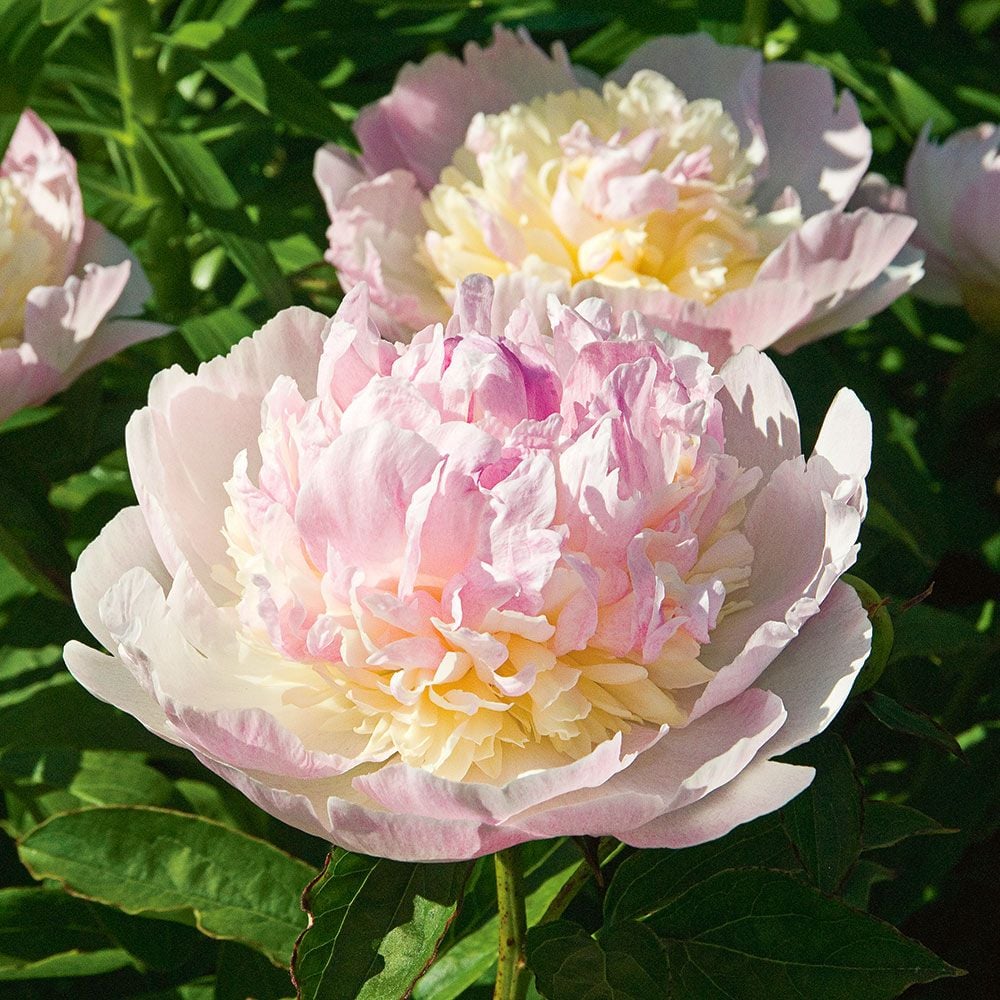
Paeonia x 'Raspberry Sunday'
Peony Type: Intersectional Peony
Bloom Time: Mid-Season Peony
Flower Form: Double
This peony looks like a scoop of vanilla ice cream with raspberry topping dripping through the petals. It has a mild, sweet fragrance and makes an excellent cut flower.
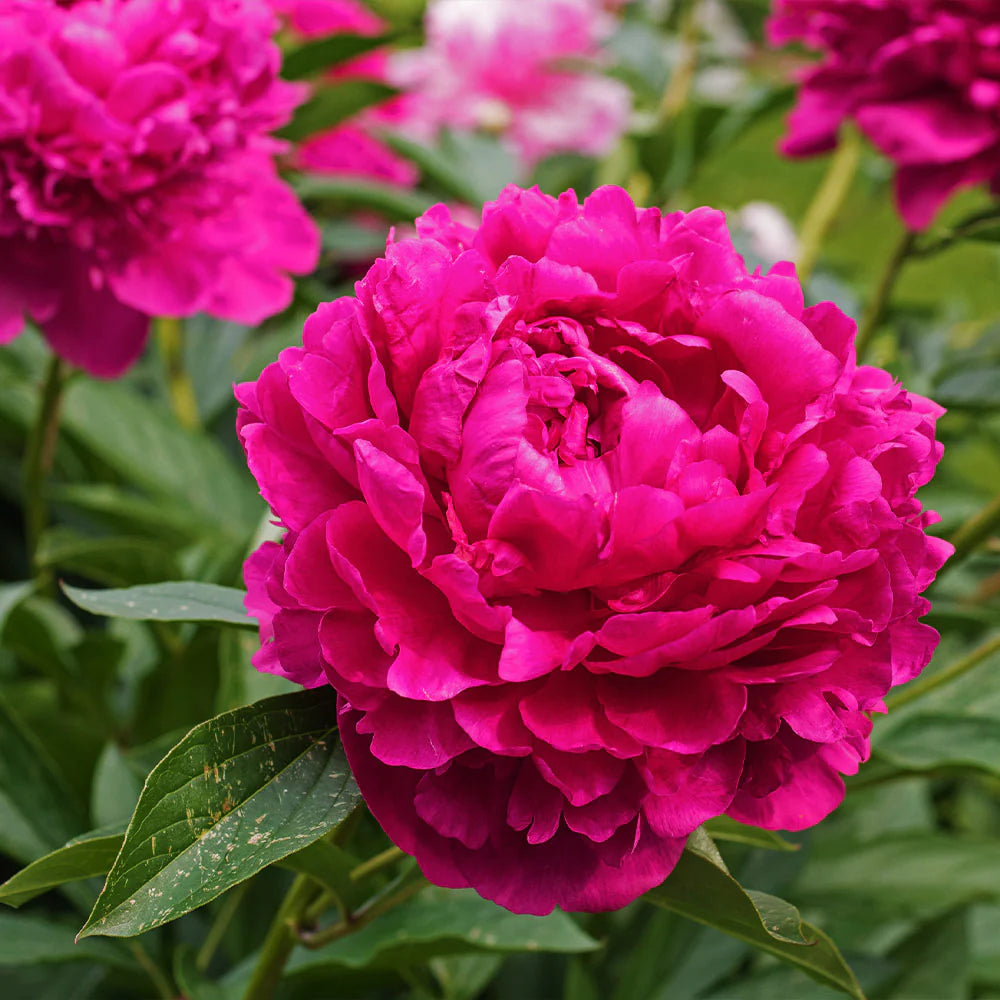
Paeonia lactiflora 'Karl Rosenfield'
Peony Type: Herbaceous Peony
Bloom Time: Mid-Season Peony
Flower Form: Double
Large, red, double blooms are spectacularly displayed on sturdy, erect stems emerging from beautiful, lush, green foliage on a rounded form. A truly exquisite cut flower. An excellent background plant for spring bulbs, or for use as a spring specimen in sunny mixed borders.
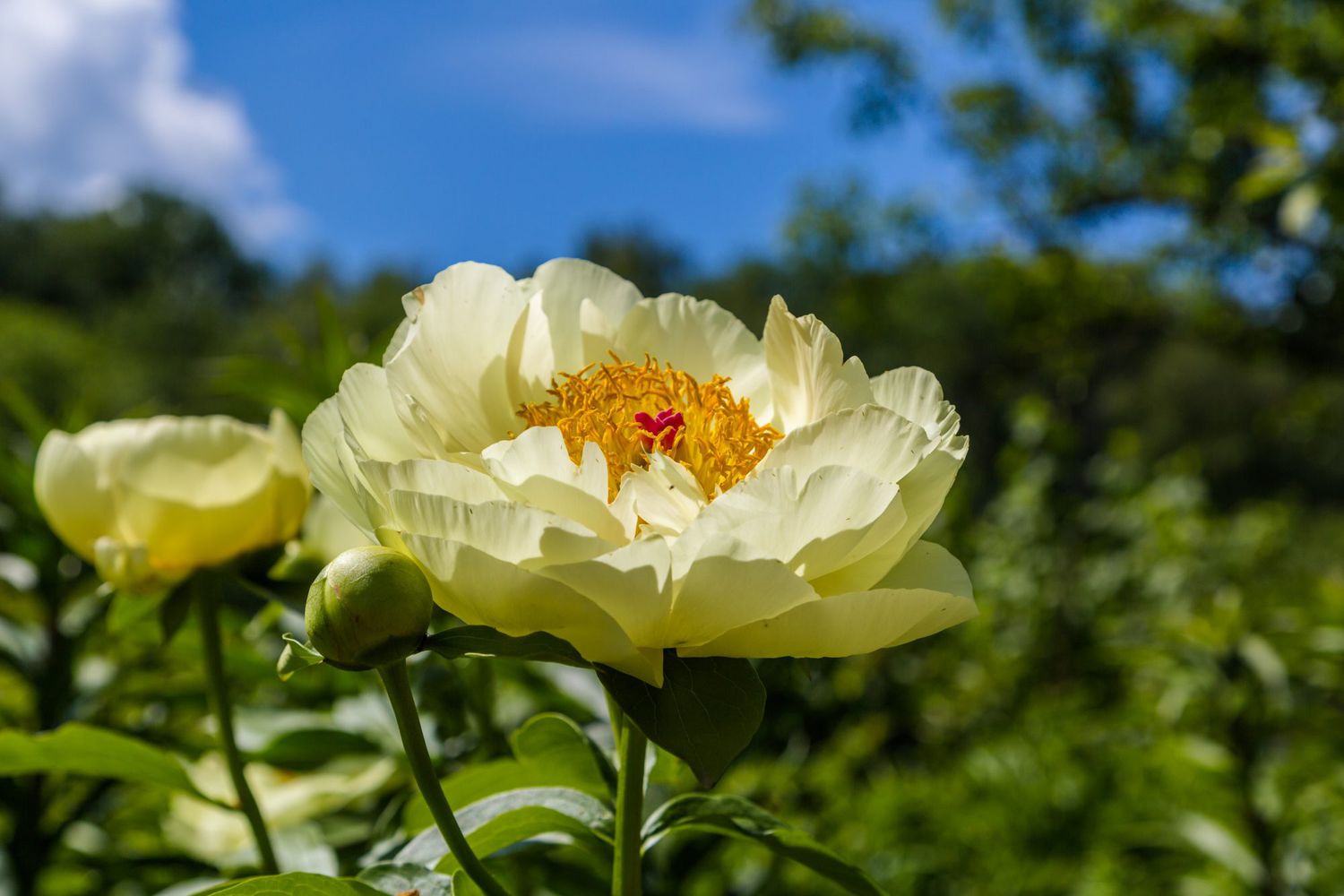
Paeonia lactiflora 'Lemon Chiffon'
Peony Type: Herbaceous Peony
Bloom Time: Early to Mid-Season Peony
Flower Form: Semi-Double
Not only does Lemon Chiffon boast the prized hue of yellow that we crave, but stems can stand up to rough weather while brandishing the large, semi-double blossoms. Even after flowering, the foliage impresses.
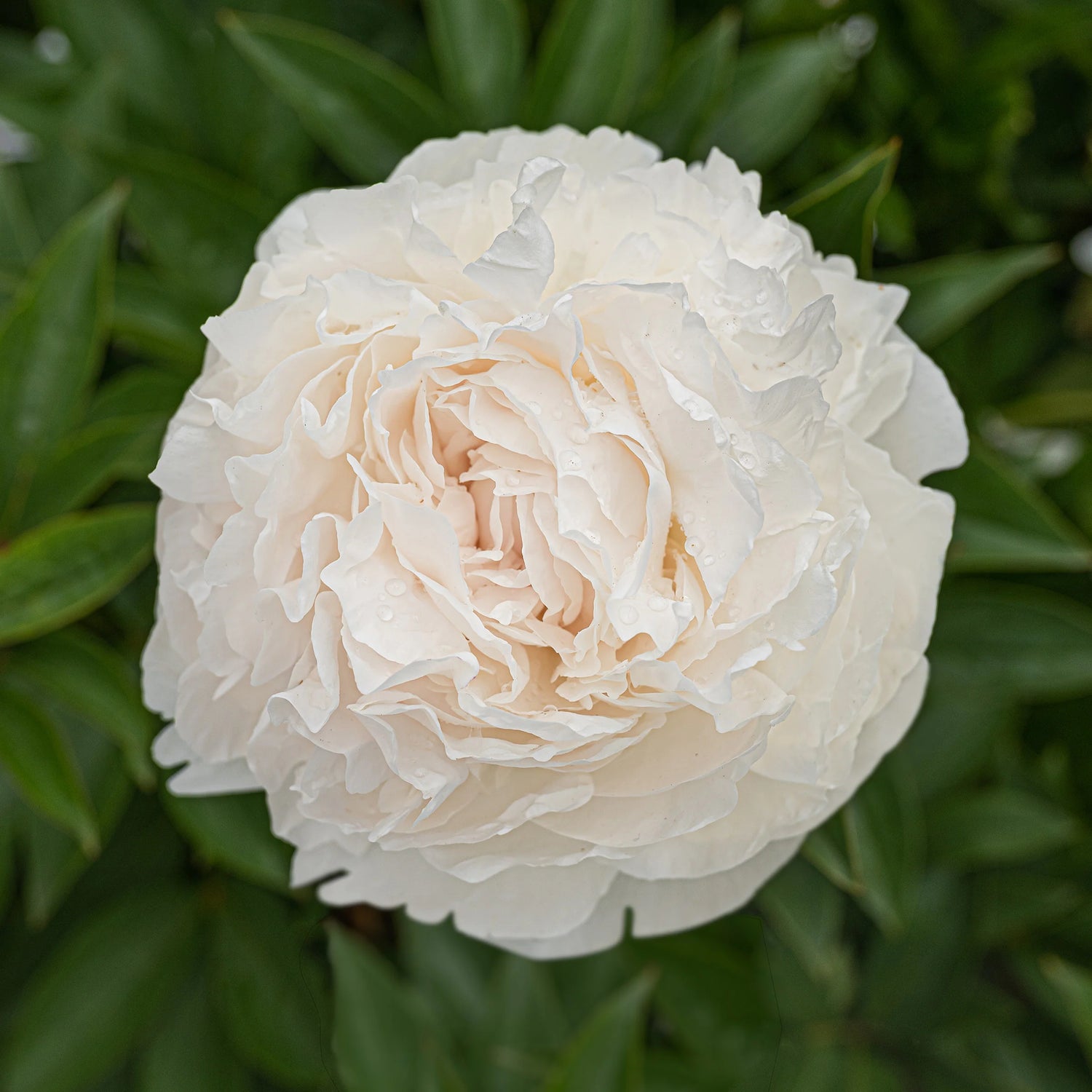
Paeonia lactiflora 'Mother's Choice'
Peony Type: Herbaceous Peony
Bloom Time: Late Season Peony
Flower Form: Double
Mother’s Choice is a full-flowered peony with flowers that bloom in the shape of a rose. They start out ivory white and develop a slight hint of champagne during the blooming process.
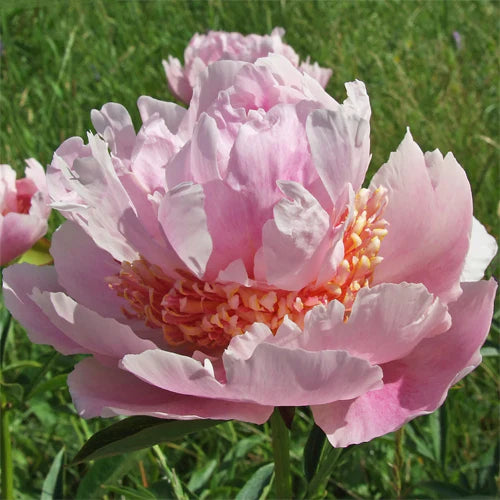
Paeonia lactiflora 'Petite Renee'
Peony Type: Herbaceous Peony
Bloom Time: Mid-Season Peony
Flower Form: Japanese
Carmine-pink, mid-season, and fragrant, Petite Renee will stand out in the garden. The dark-green foliage only grows to around 30" so you will want this selection toward the front of your garden bed where colorful 5" blossoms will vie for all the attention.
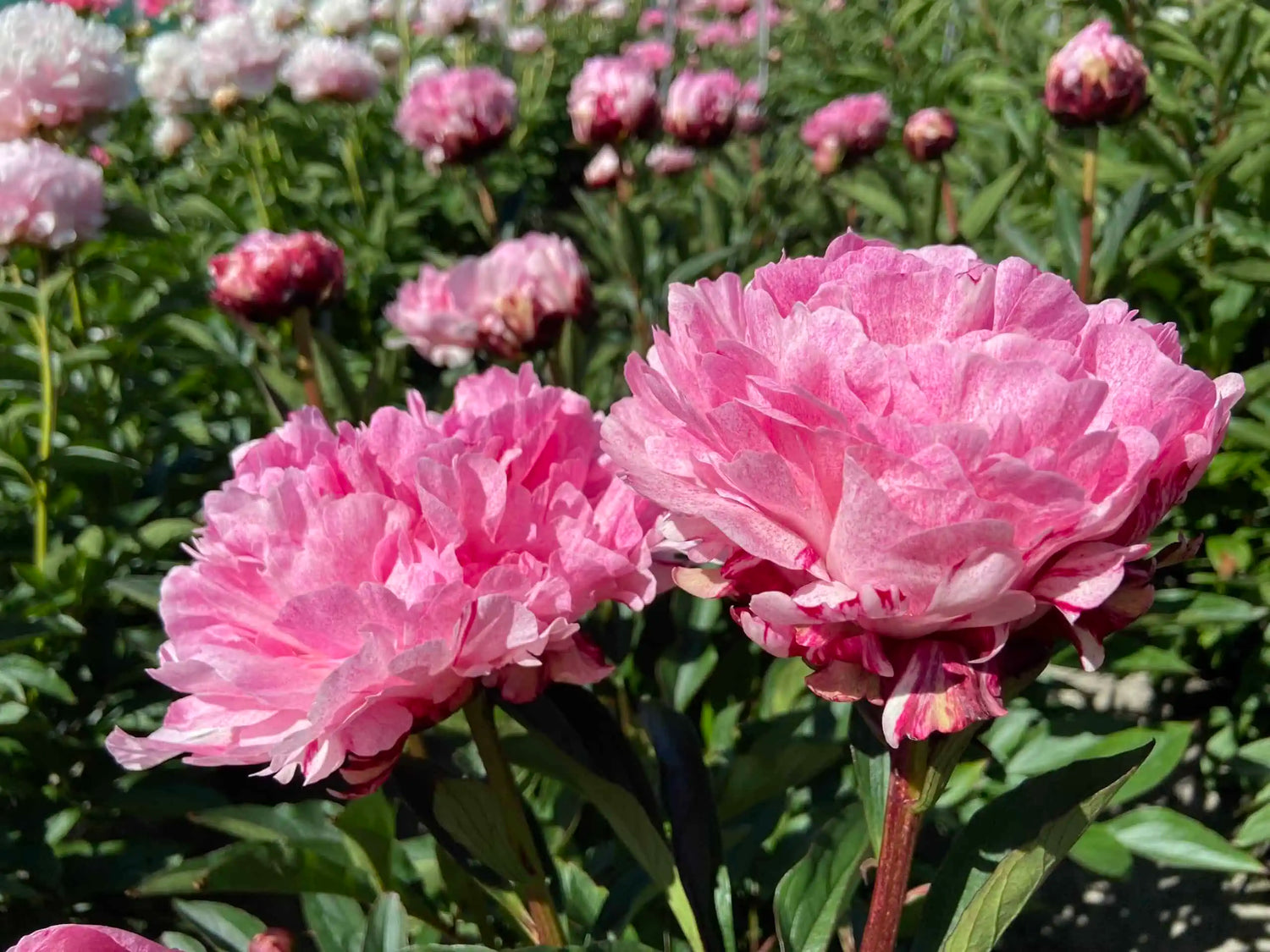
Paeonia lactiflora 'Pietertje Vriend Wagenaar'
Peony Type: Herbaceous Peony
Bloom Time: Mid-Season Peony
Flower Form: Double
This peony is a cross between Kansas and Sarah Bernhardt. It has darker paint flecks on the petals, red buds, and strong stems.
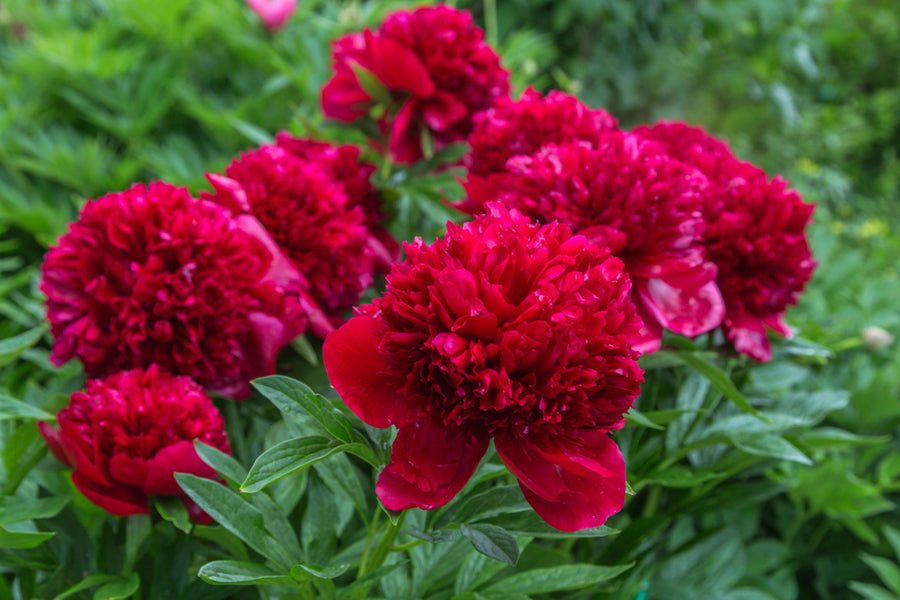
Paeonia lactiflora 'Red Magic'
Peony Type: Herbaceous Peony
Bloom Time: Early to Mid-Season Peony
Flower Form: Double
Red Magic peony offers huge blooms made up of a mass of twisted, feathered, deep red petals for a lavish display. Almost artichoke-like in presentation, the petals slim to a narrower shape and darken to a deeper crimson as they near the center. This peony is amazing in the garden and stunning in bouquets.
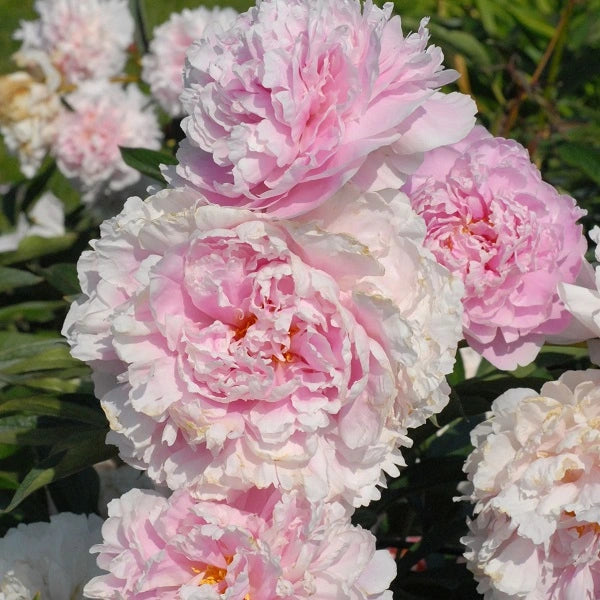
Paeonia lactiflora 'Sarah Bernhardt'
Peony Type: Herbaceous Peony
Bloom Time: Late Season Peony
Flower Form: Double
These shapely, huge, dark rose-pink flowers are stunning! The rose-pink color with petals edged a trifle lighter, gives an attractive appearance. This grand flower is one of the most popular and reliable bloomers with a sturdy stem.
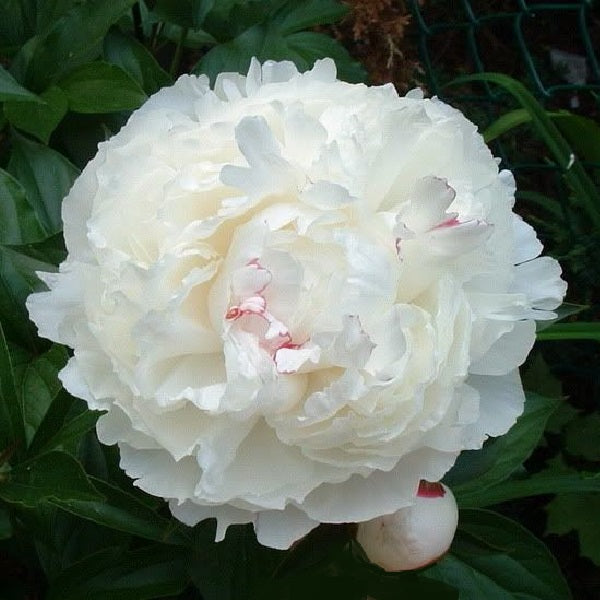
Paeonia lactiflora 'Shirley Temple'
Peony Type: Herbaceous Peony
Bloom Time: Early to Mid-Season Peony
Flower Form: Double
Shirly Temple offers a beautiful light rose pink which fades to white and profuse flowering on dark green foliage. Flowers are often 8″ in diameter! It’s an outstanding cut flower and garden variety for its firm stems and early flowering period. It also has a slight fragrance.
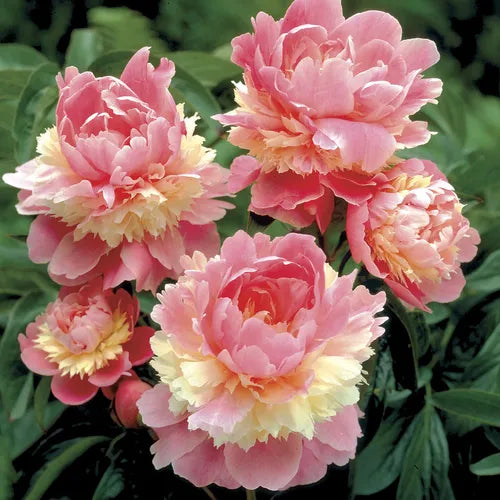
Paeonia lactiflora 'Sorbet'
Peony Type: Herbaceous Peony
Bloom Time: Mid-Season Peony
Flower Form: Double
The lush, fully double, 5” bomb-shaped blooms of Sorbet are irresistibly beautiful. It has pink guard petals that erupt with elaborate, flouncy layers of pinkish-ivory petals and pink petals.
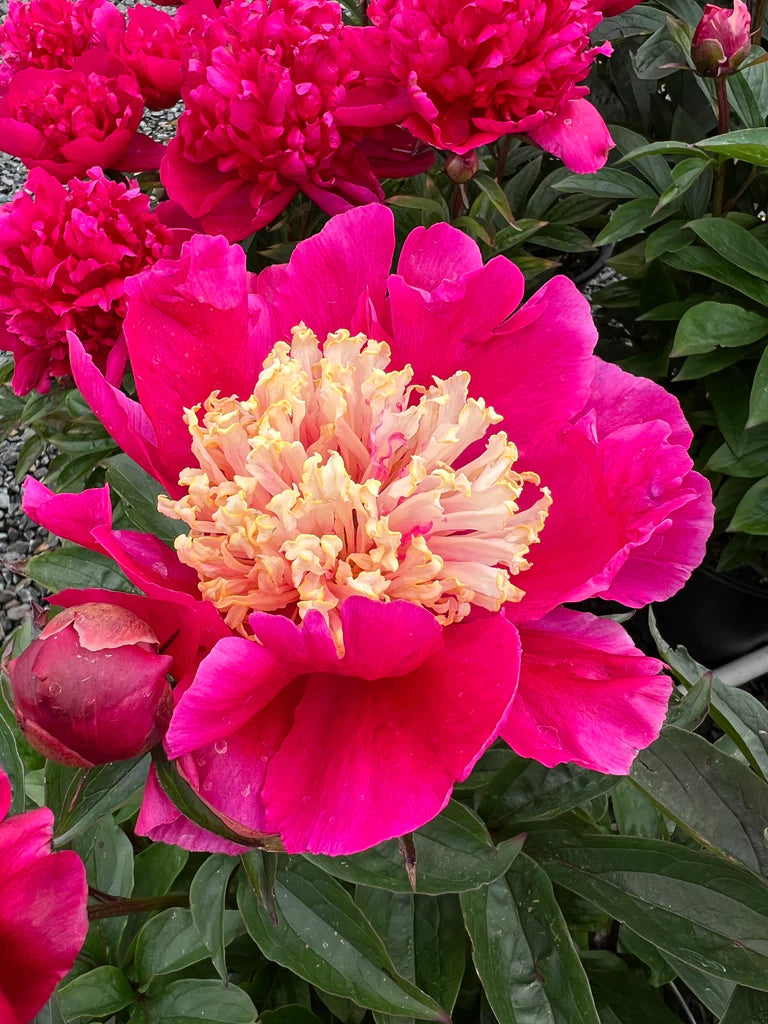
Paeonia lactiflora 'Winnifred Domme'
Peony Type: Herbaceous Peony
Bloom Time: Mid-Season Peony
Flower Form: Double
The blooms have a decent size, but the dark red color is what makes this peony stand out. Glossy green foliage gives good contrast as well.
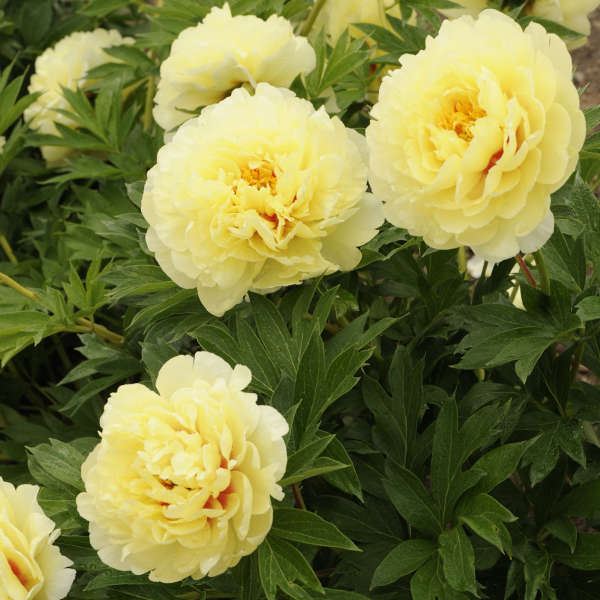
Paeonia x 'Bartzella'
Peony Type: Intersectional Peony
Bloom Time: Mid-Season Peony
Flower Form: Double
Considered by many to be Roger Anderson’s best Intersectional Peony introduction.
Bartzella is incredibly elegant looking, with flowers neatly spaced on the top and sides of the clump. Established clumps can produce 80 or more flowers apiece! The semi-double to double, pastel yellow flowers have a small rose purple flare in the center and a pronounced sweet fragrance. They measure 6-8" across on average.
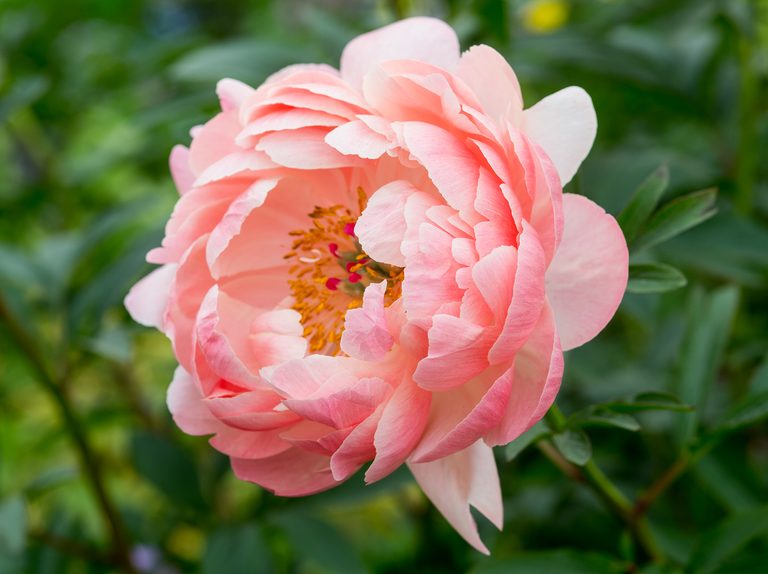
Paeonia x 'Coral Charm'
Peony Type: Intersectional Peony
Bloom Time: Late to Mid-Season Peony
Flower Form: Semi-Double
A color breakthrough for peonies. When Paeonia 'Coral Charm' was introduced, it won the 1986 Gold Medal of the American Peony Society, and has been winning hearts ever since. The deep coral buds, beautiful in themselves, open to bowl-shaped blooms with gracefully incurved petals of coral-peach surrounding a frilly, glowing mass of stamens. 5 to 6 inches across and very long-lasting fresh or cut, these mid-spring blooms are the focal point of any garden setting.
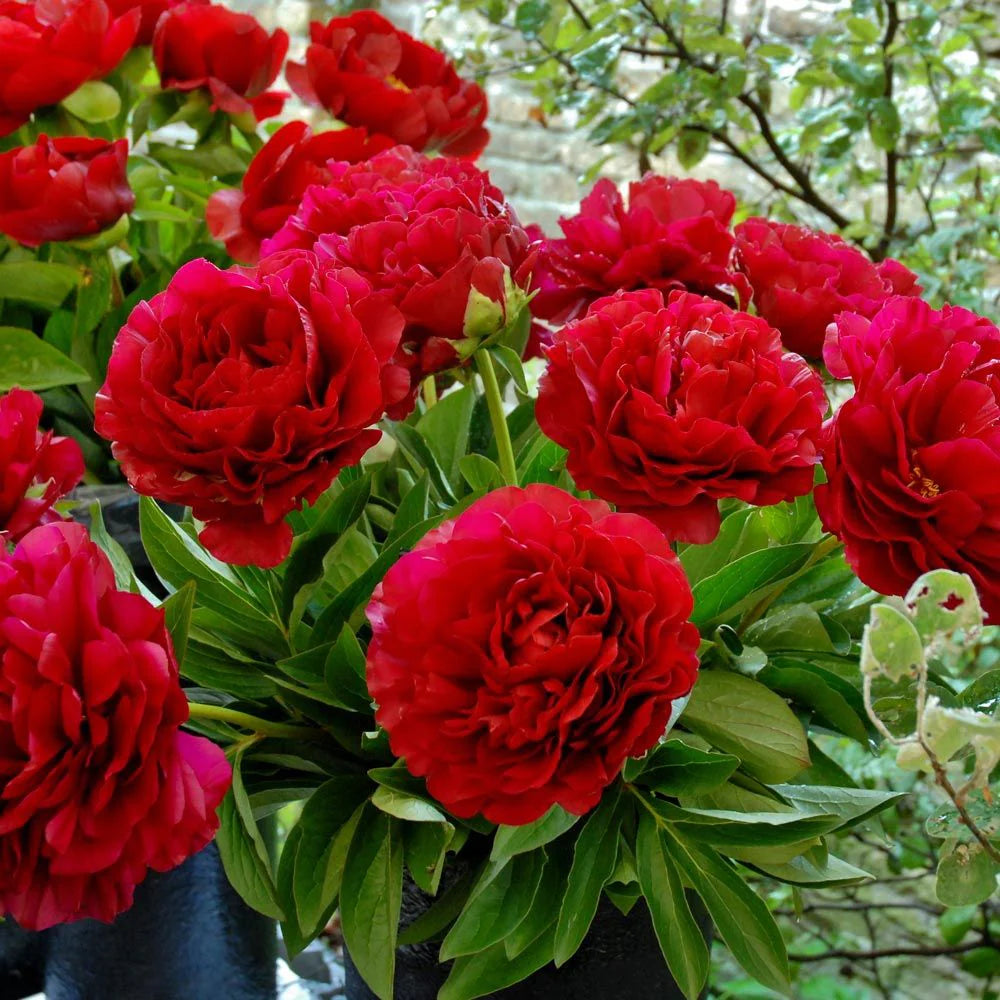
Paeonia x 'Henry Bockstoce'
Peony Type: Intersectional Peony
Bloom Time: Early to Mid-Season Peony
Flower Form: Double
Regarded as one of the best red double peonies, Henry Bockstoce is a spectacular hybrid peony with enormous, double, rich cardinal red flowers, up to 8 inches wide. It is very fragrant. It also has strong stems and make an excellent cut flower.
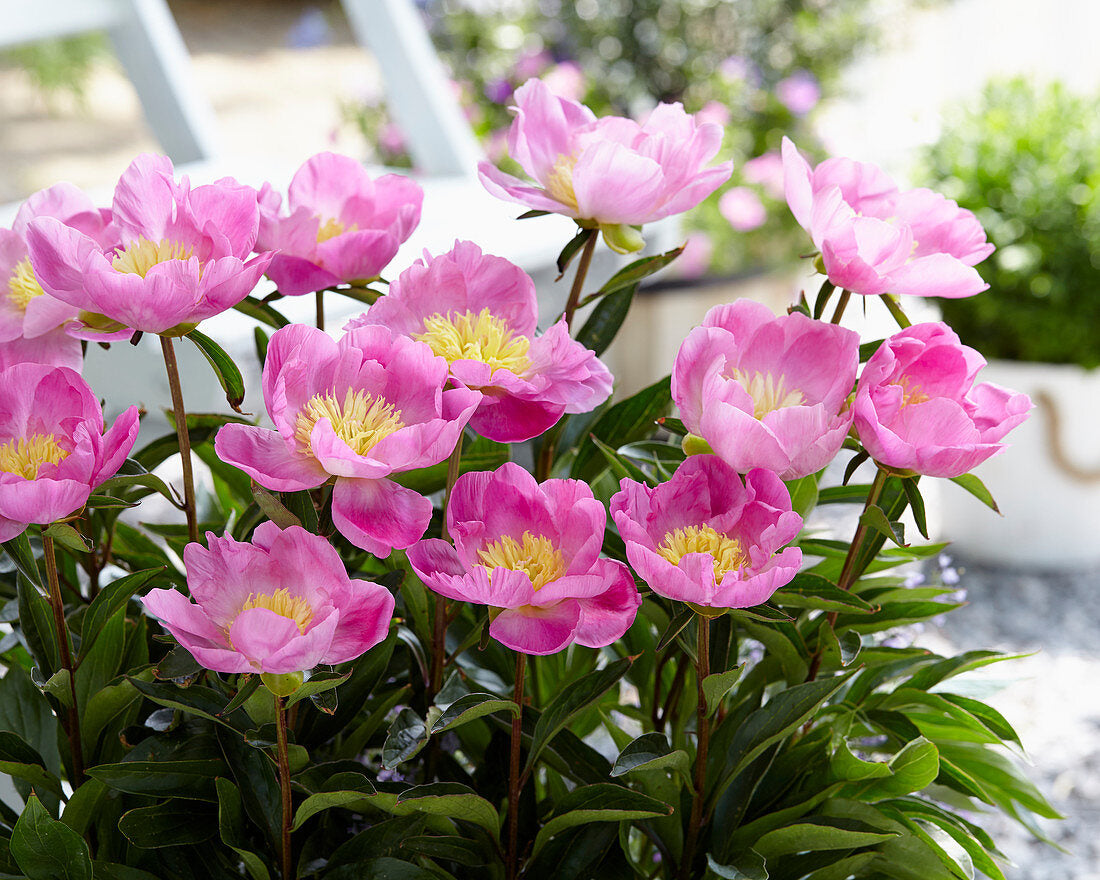
Paeonia x 'Wladyslawa'
Peony Type: Intersectional Peony
Bloom Time: Mid-Season Peony
Flower Form: Anemone
The peony Wladyslawa has clear pink flowers, which become almost white towards the middle of the flower and the center is usually crème colored. This variety has sturdy stems and a hard flower. It produces an abundance of flowers and is resistant to many diseases and it is strong grower.